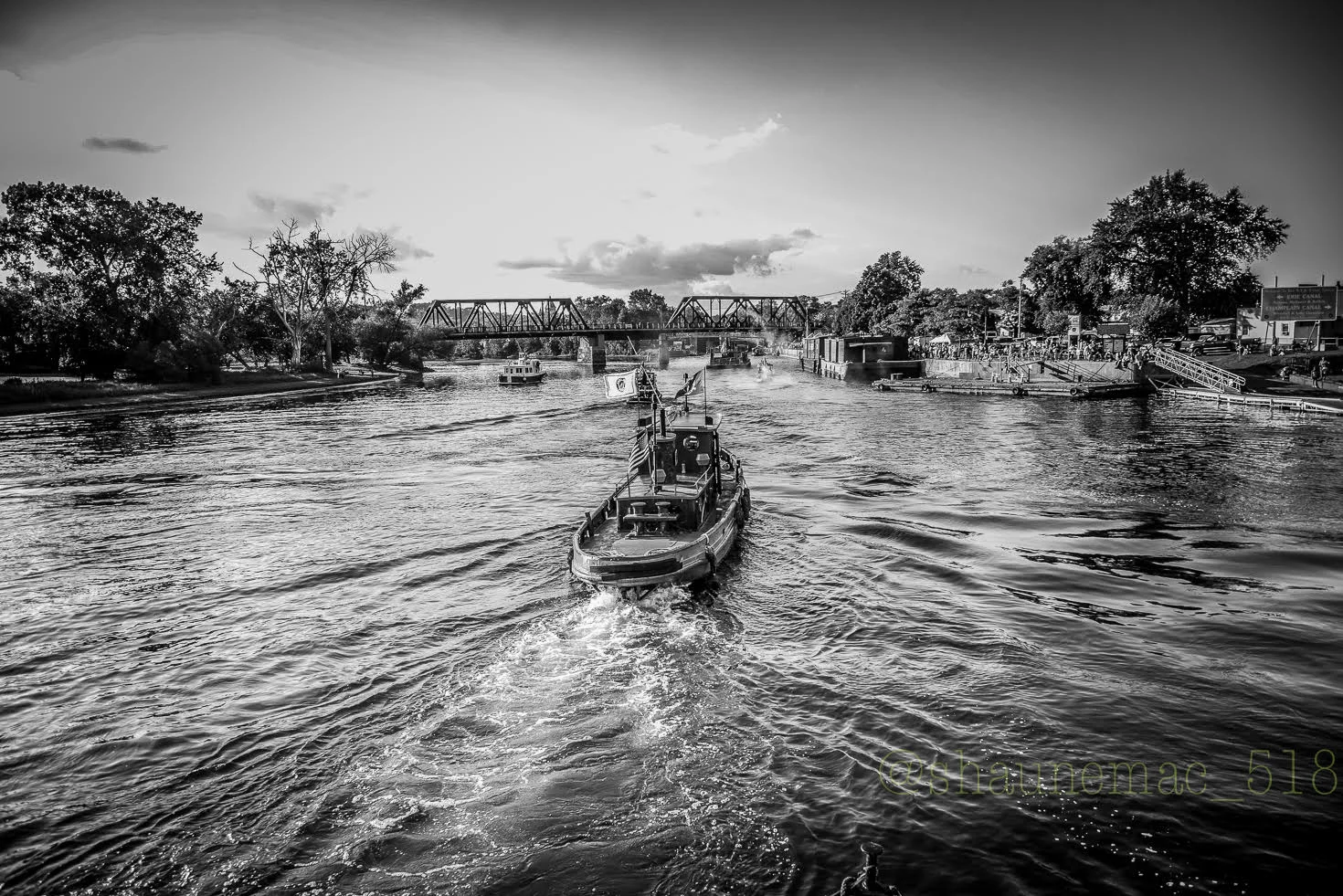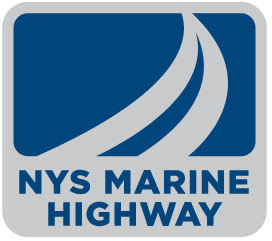2023 Tug of the Year: James Turecamo
/In 1850, the latest in a long line of 13-year-old boys began a job as a “hoggee” – leading mules towing barges along the Erie Canal. His name was Michael Moran, son of a 61-year-old unemployed stonemason who had recently emigrated from Ireland with his family, settling along the Canal in upstate New York’s Herkimer County. After these humble beginnings, a few years later, Michael became a boat owner himself, beginning a career as a shipper of goods along the Erie Canal. Not long afterwards, Michael’s gaze turned south, toward New York Harbor, and a brighter future. At the age of 27, Michael rented a desk in a lower Manhattan tavern, marking the beginning of Moran Towing.
In 1899, John E. Matton opened a small shipyard on the mule-drawn era Champlain Canal in Waterford. He built and repaired wooden barges that were still being towed through the canals of New York State by animals and lately (increasingly) small, steam-powered tugboats. But in 1903 the New York State Legislature followed the instructions of then-Governor Theodore Roosevelt just a few years earlier who had declared “The present canal must be enlarged!” That year the Barge Canal Act passed, which would construct an entirely new State Canal System (the 3rd full iteration of the waterway) which would accommodate barges pushed and towed exclusively by tugboats, not animals. Knowing his business would soon be located on an abandoned waterway, Matton looked nearby for a suitable location to expand, and construct a facility which could service the new canal. He found such a place just to the south on Van Schaick Island in Cohoes. In 1916, the John E. Matton Barge Plant, later John E. Matton & Son, opened in Cohoes New York, hard by the junction of the Champlain & Erie branches of the new Barge Canal, which would open in its entirety in 1918.
In 1892, a young (8-year-old) Bartholdi Turecamo emigrated with his family from Isola Lipari – described in a 1998 Baltimore Sun article as a flyspeck island between the northern coast of Sicily and the toe of the boot of Italy. In 1900, as a 16-year-old, he embarked on a career in the construction business, which would become Turecamo Coastal and Harbor Towing Corporation, ultimately one of the largest marine towing companies on the east coast. Two sons, Bart Turecamo and Bart Turecamo, Jr., would go on to lead the firm.
These great men, their lives and legacies, would take decades to intersect and intertwine. This is the story of our Tug of the Year. It is the very context of this twin-engine workhorse with its beginnings on these waters, the James Turecamo.
If Waterford was (and is) a tugboat town, and its waterways its “Main Street”, then invariably Matton Shipyard was the anchor store of the business district. Municipal boundaries don’t mean much to boatmen; what is typically an obstacle to be got across (or a municipal boundary itself) is their workplace. As such, whether Matton Shipyard was in Waterford, Saratoga County or Cohoes, Albany County meant no difference…it was here.
And so, after over two decades of celebrating working vessels which have plied New York waters for decades, storied in their own right, each distinctive in a different way, we celebrate a tugboat which began her life in this very spot at Matton Shipyard. In so doing, we also recognize the enduring legacy of the Matton, Moran, and Turecamo families.
After a half-century of operation at the Cohoes location, and after the passing of John E. Matton’s son, Ralph, the Matton Shipyard was sold to Bart Turecamo. It was said that Turecamo appreciated the traditional methods employed by craftsmen at the shipyard, and these practices continued during his ownership, with care and quality the hallmarks of the operation. From the time Turecamo purchased the shipyard in 1966 and its closing 40 years ago in 1983, Turecamo built nine commercial tugs and four launches for the New York City Police Department. One of those tugs was the James Turecamo.
“Canallers” hold a special place in the hearts of tug fans and Tugboat Roundup attendees. The graceful lines of these low-slung behemoths harken back to an earlier time of shipbuilding, with the crest of the low, unassuming pilothouse just peeking slightly over the rest of the superstructure. Since the 1950s, though, these canallers have been equipped with telescoping pilothouses which rise up to see over a barge ahead – like a praying mantis poised for the strike – and then slink back down to earth to clear the low bridges of the Canal. A whole generation of similar tugs built for New York’s canals and contiguous waterways have had one thing in common in addition to this general appearance: a single wheel.
While single-screw boats may not offer the same level of maneuverability as their twin-screw counterparts, the canal presented a unique challenge where this disadvantage became less significant compared to the risk of propellers getting entangled with the armored banks, especially in tight bends. The advantage of having only a single, centrally positioned wheel was that it inherently maintained a greater distance from the canal's banks at all times, a crucial consideration for canallers, making them exclusively designed as single-screw boats.
In 1969, a brand-new boat slid down the ways at the Turecamo-run Matton Shipyard. She was a canaller. Built to Turecamo’s exacting specifications, by Matton’s skilled craftsmen, appropriately festooned and adorned in the trademark “woodgrain” paint scheme for which Turecamo boats were known – she was the quintessential canaller through and through in every respect save one…the James Turecamo had two wheels.
This twin-screw canaller went right to work on New York’s waters and became a ubiquitous sight in New York Harbor, but not terribly much on the Canal System. As a twin-screw boat she was ideal for many jobs but the narrow canal wasn’t one of them. Still, as one of the last canallers built at the Cohoes yard, she bridged the gap between a generation of traditional canallers and the larger, ocean-going tugs which would be built over the next nearly decade and a half, slipping through the outstretched and raised arms of the 112th Street lift bridge enroute to deeper waters and higher bridges.
Today, Capt. Bill Powers continues a family legacy of service aboard the James. His father, legendary Capt. Bill "Salty" Powers served on the boat when she was first launched in 1966, continuing a career he began in 1937. In 1978, Salty Powers broke in a new mate on board: his son. Aboard the James, Capt. Powers recently reminisced about his father's legacy and his own career, long and distinguished in its own right. "I'm grateful for the career I've had, from working with my dad aboard the James, to making captain in 1979, to being back aboard the James doing what I love all these years later," Capt. Powers said. "Running boats from Norfolk, Virginia to Bangor, Maine and everywhere in between over the last 45 years - including working as captain of the James in New York Harbor from 1988 to 2002 and again today - I've had a career I once could only dream of."
In 1998, as the James Turecamo continued to push, pull, prod and cajole barges and ships of all shapes and sizes, the company Michael Moran had envisioned along the towpaths of the Erie Canal, and formed in a New York City barroom, was thriving. The Moran Towing Corporation had become not just one of the largest marine towing companies on the east coast, or even in the country, but globally. That year, they grew just a little bit larger, with the acquisition of the Turecamo Coastal and Harbor Towing Corporation and (by extension) the venerable James Turecamo.
Like the Matton family, the Morans had moved from Mules to Tugboats, and had built a legacy which endures today. The addition of the Turecamo fleet grew the business and the company’s overall capabilities but also, importantly, reconnected these stories of immigration, family, enterprise, and success.
This year, as we celebrate the 40th anniversary of the closing of Matton Shipyard under Turecamo ownership, we also celebrate the rich tradition of boat building and tugboating that is the very foundation of this annual event. And pay tribute to these three amazing families whose stories have woven together over a century and a half to bring the James Turecamo home to her birthplace.
JAMES TURECAMO
USCG Doc. No.: 523580
Vessel Service: TOWING VESSEL
Year Built: 1969
Ship Builder: MATTON SHIPYARD COMPANY
Hull Number: 338
Length: 92.4 feet
Hull Depth: 12 feet
Hull Breadth: 27 feet
Gross Tonnage: 225
Net Tonnage: 153












